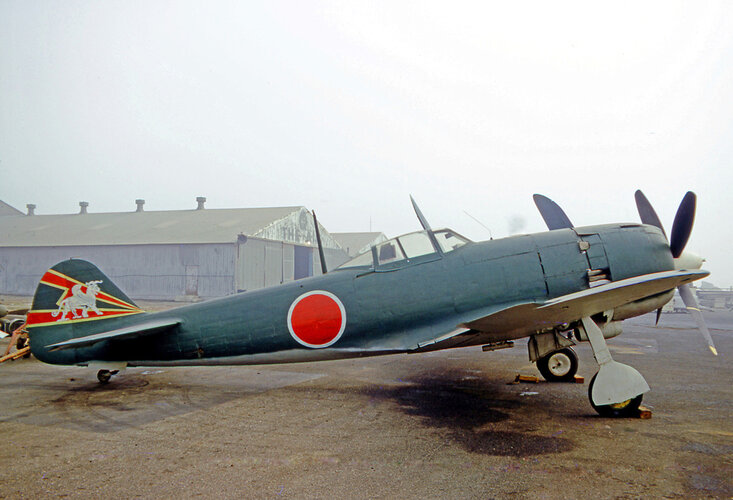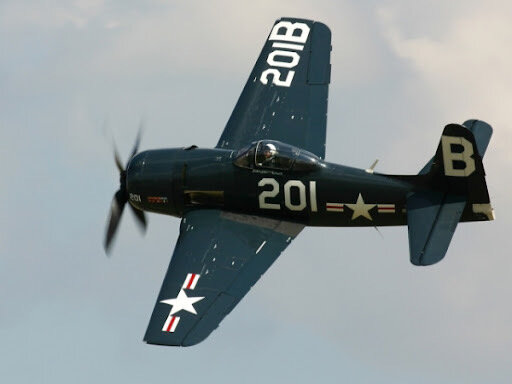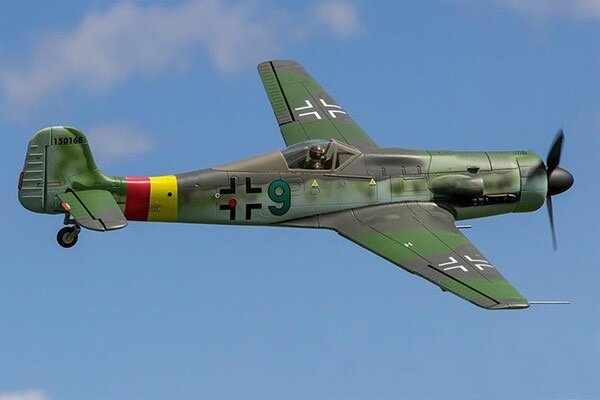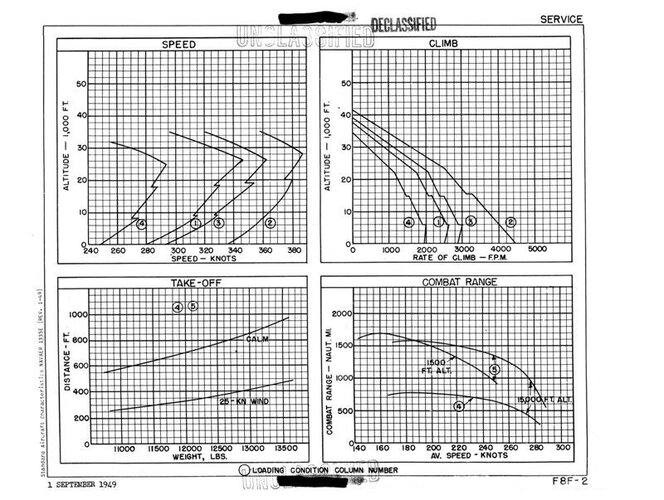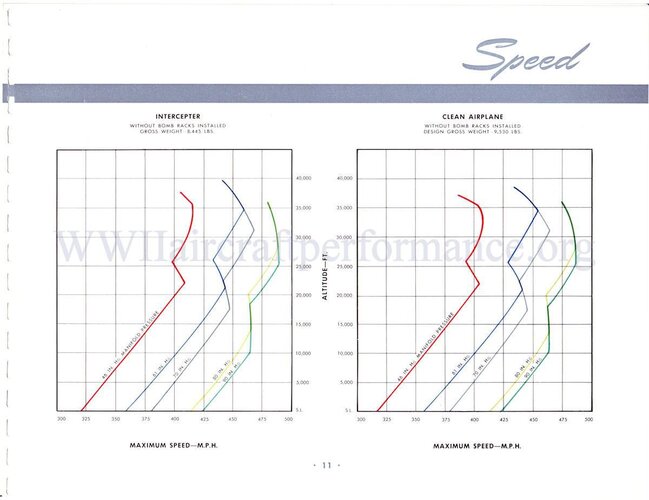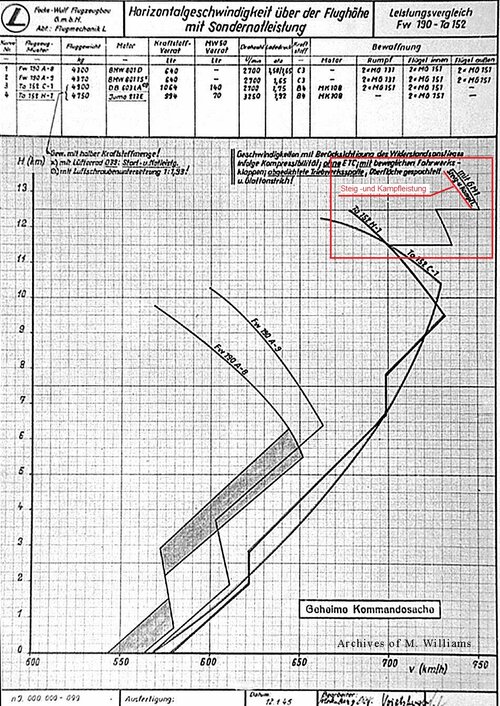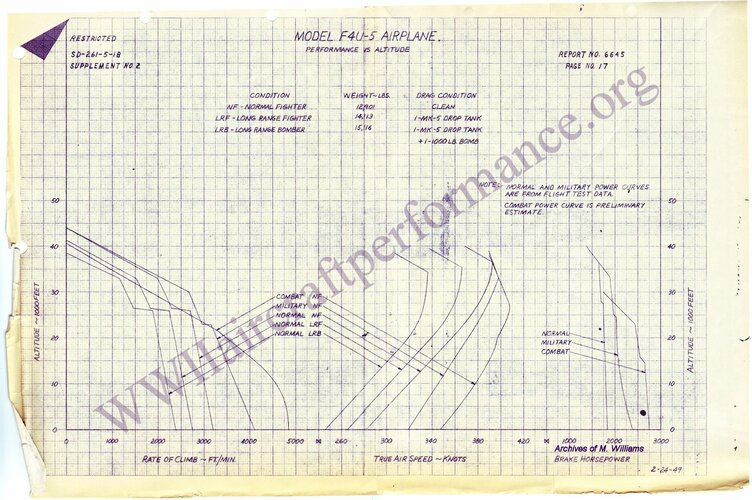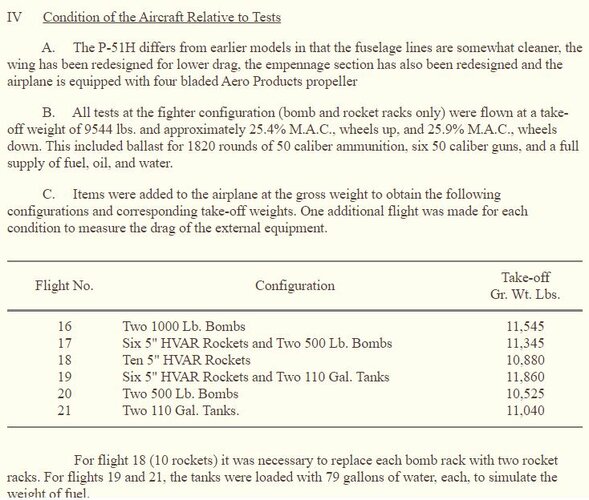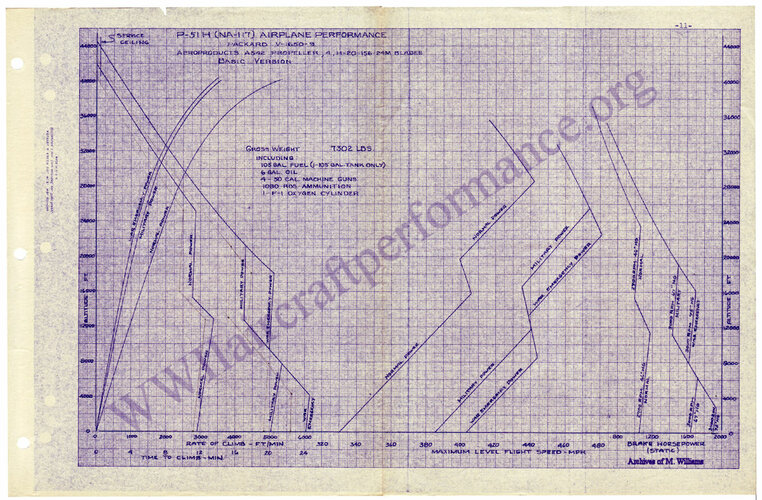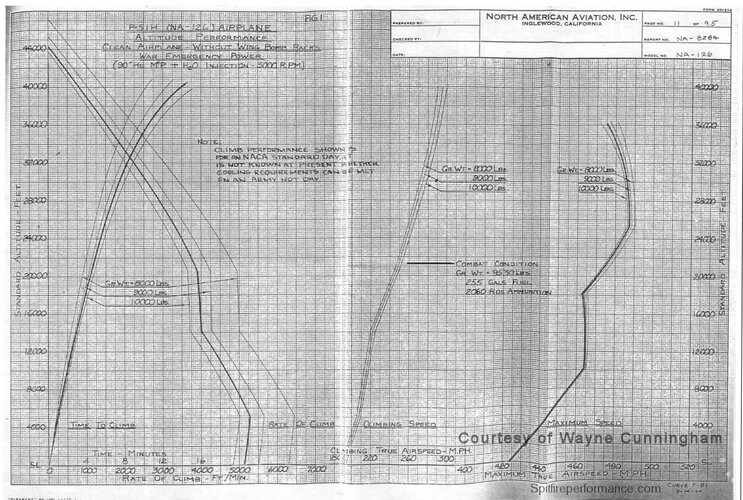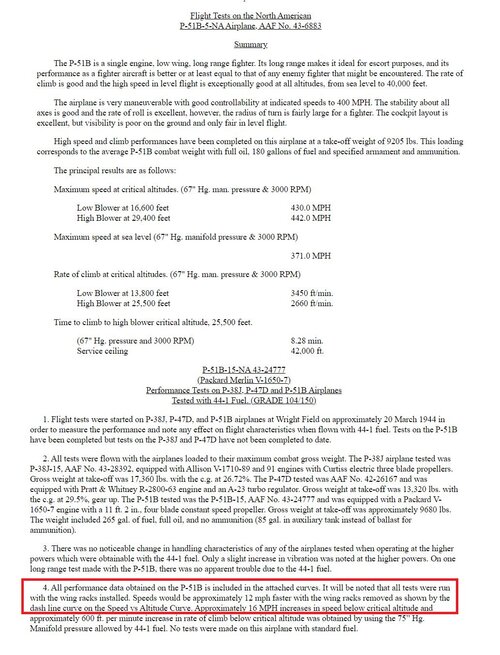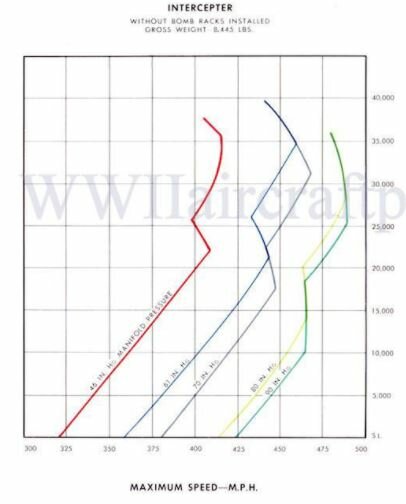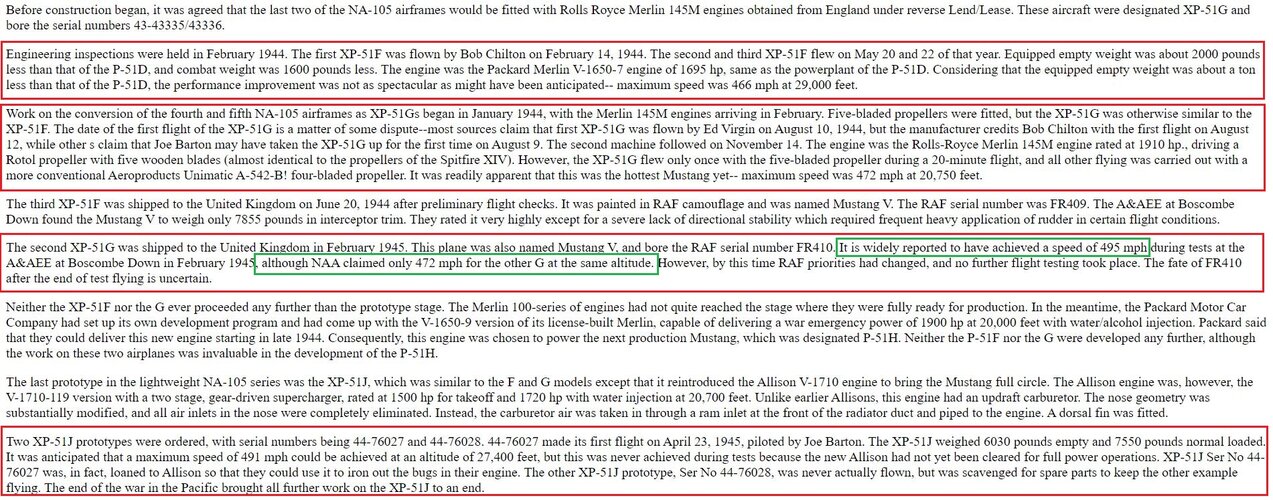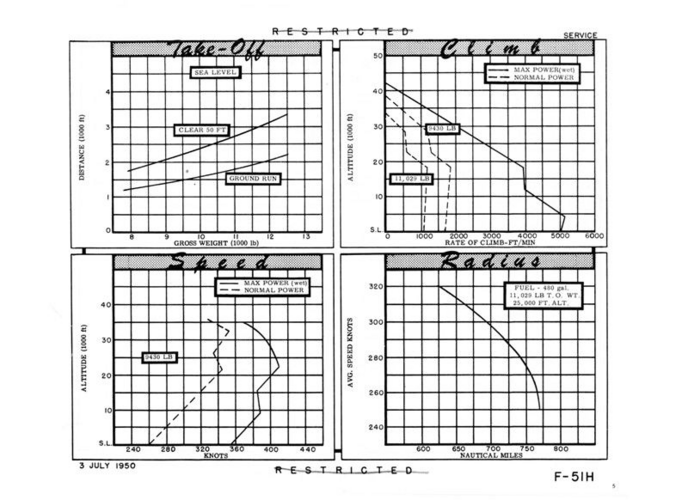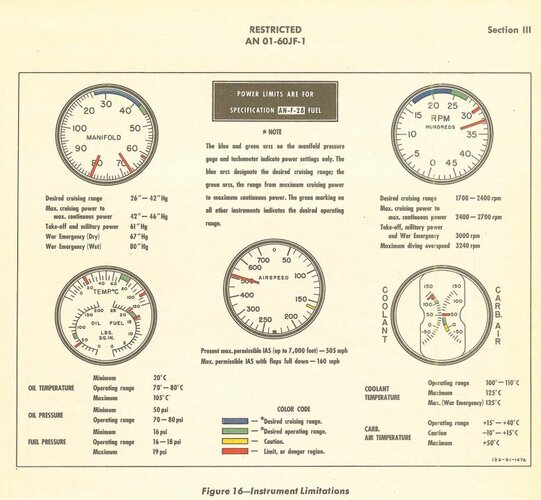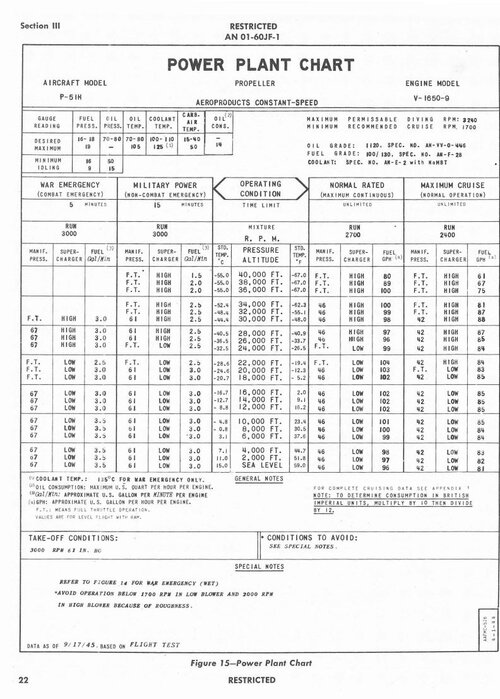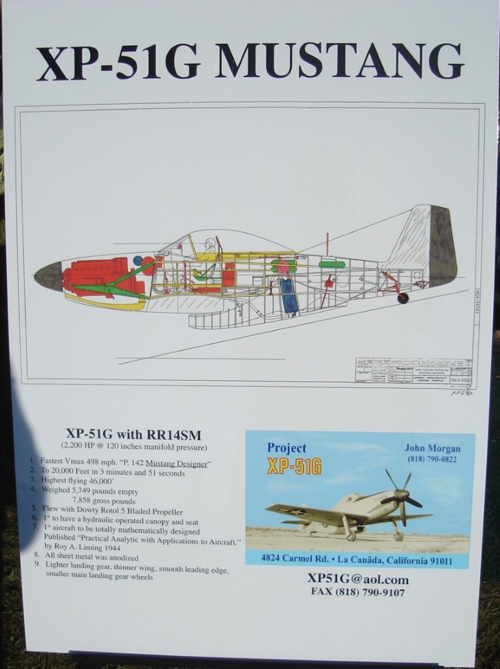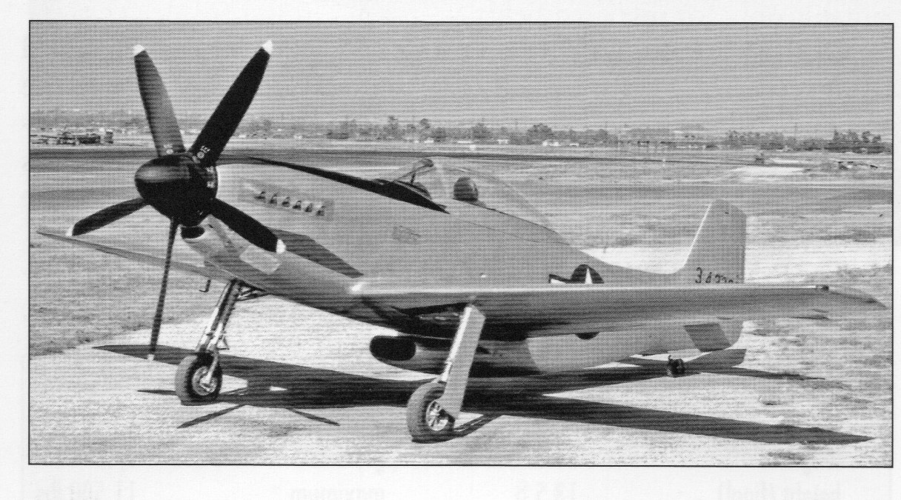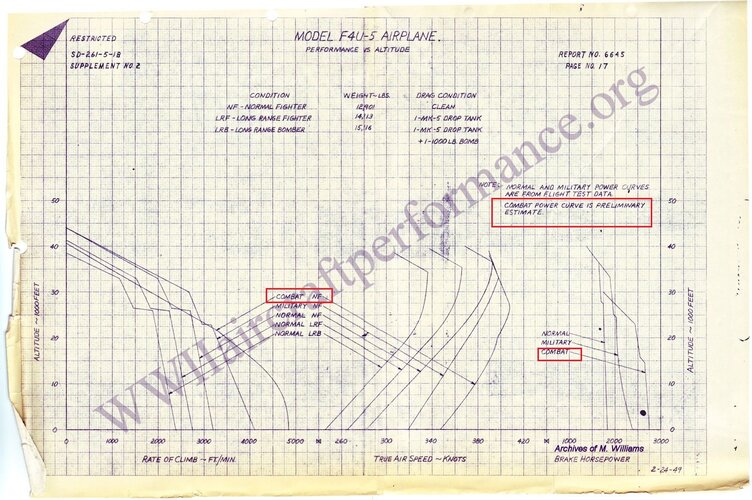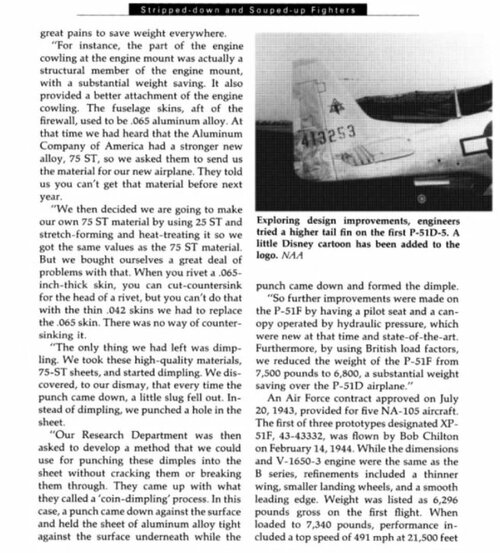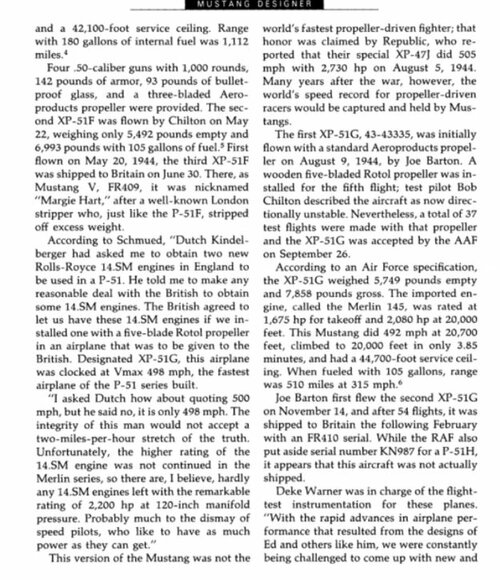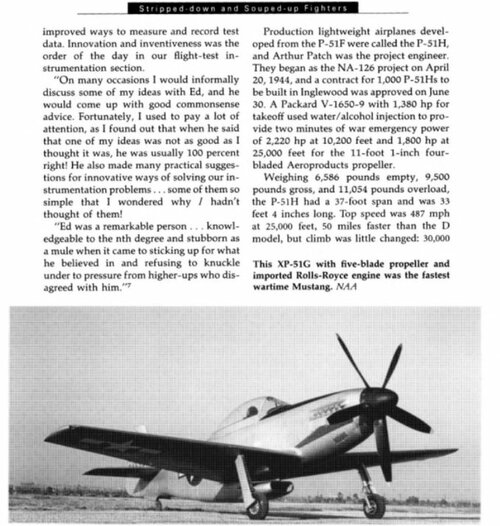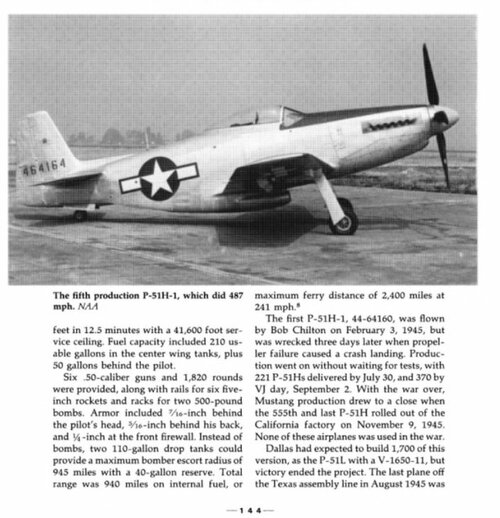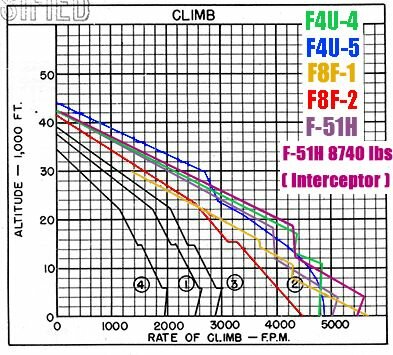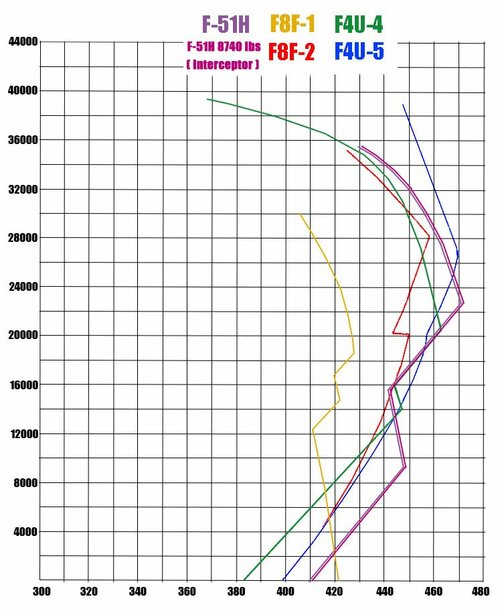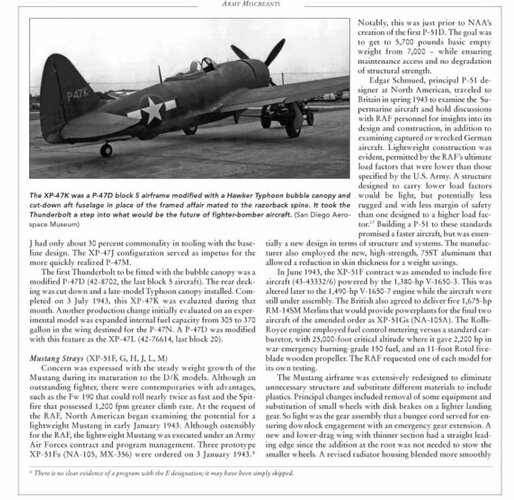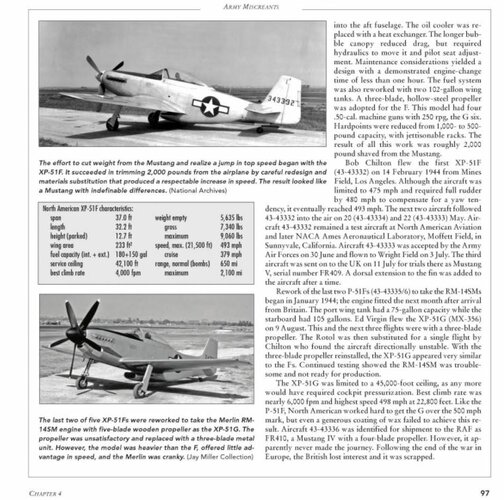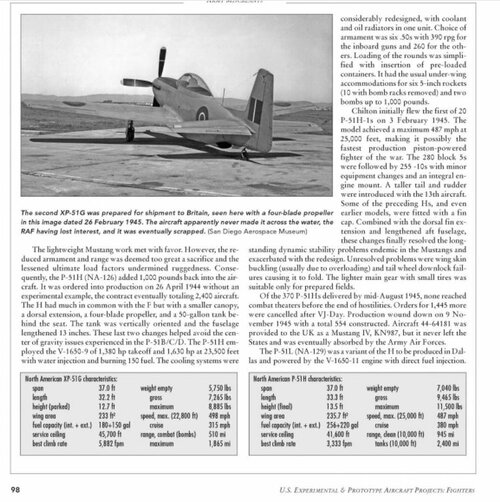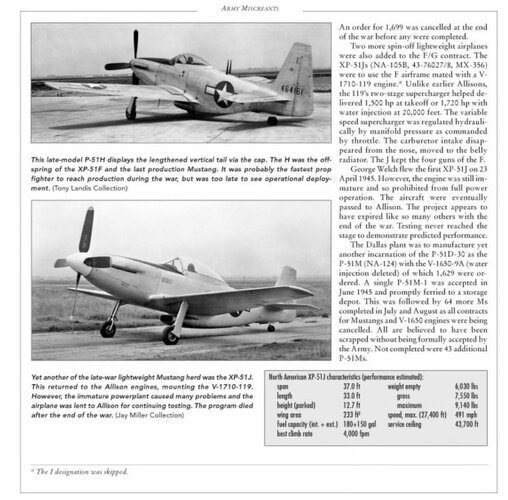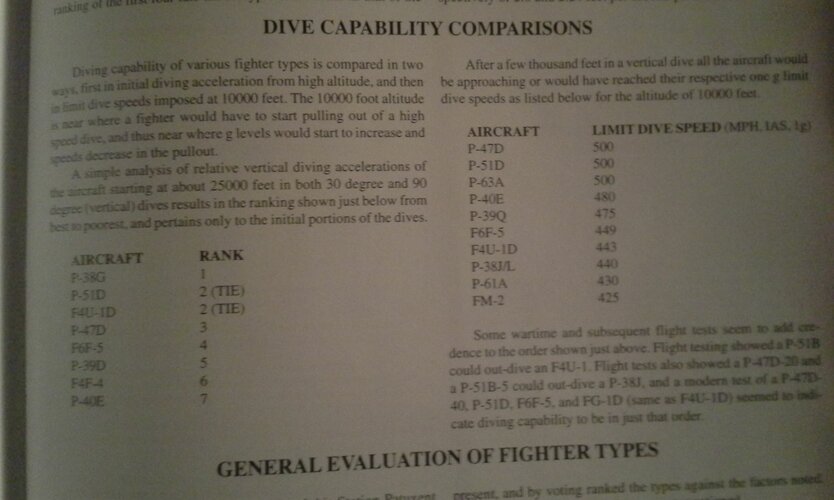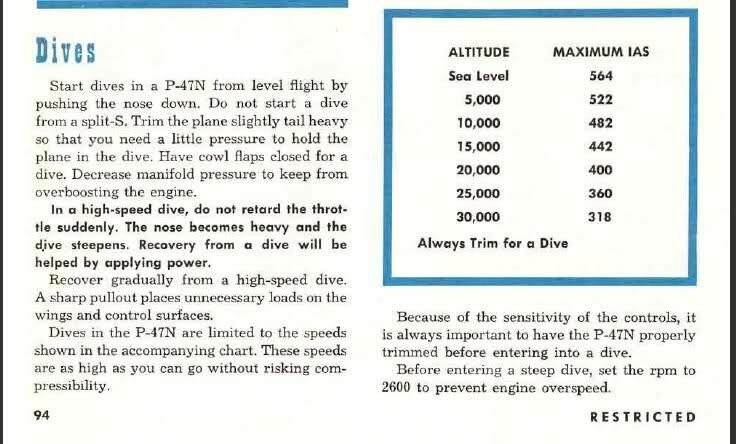Hi again,
To get from 460 mph to 482 mph (roughly reading the chart) at the same altitude, you need very roughly (482/460)^3 = 15% more power. At the same rpm and the same boost pressure, how is that extra power going to be generated?
One explanation might be that the graph was prepared for an increase in rpm figured in for war emergency power.
OK, I just found this graph:
This indicates clearly that my hypothesis regarding War Emergency Power being attained at an engine speed greater than 3000 rpm is not correct.
You can see that the static power (red graph) at 30000 ft is ...
3000 rpm, 90" Hg, water injection: 1450 HP
3000 rpm, 80" Hg, water injection: 1450 HP
3000 rpm, 70" Hg, no water injection: 1220 HP
3000 rpm, 61" Hg, no water injection: 1220 HP
And at 13000 ft ...
3000 rpm, 90" Hg, water injection: 1880 HP
3000 rpm, 80" Hg, water injection: 1880 HP
3000 rpm, 70" Hg, no water injection: 1620 HP
So the assumption apparently is that the addition of water injection at unchanged boost pressure increases horse power by 230 HP in high supercharger gear, and by 260 HP in lower supercharger gear.
As this is a gain in the region of 16 - 19% of brake horse power at the respective altitudes, this seems to be far more than the 4% expected under the same condition by the British estimate I mentioned earlier.
What's more, the power curves in the booklet are not identical to the one used for the revised edition of the NAA report, which due to the substitution of the Bendix speed density pump with a carburetter have a reduced full throttle height.
Original curve with the Bendix speed density pump:
Revised curve with carburettor:
The report (referred to as NA-8284-A, I believe) states:
"These calculations were necessary to provide complete performance data for airplane equipped with an engine incorporating a carburetor for fuel metering instead of the speed density pump originally anticipated in preparing report NA-8284 dates September 25, 1944. "
This leads to the following conclusion:
- The coloured "booklet" figures were prepared on the basis of an estimate of engine power for the expected production configuration, which is shown in p-51h-booklet-pg10.jpg, which is basically identical to that in p-51-powercurve.jpg.
- Engine power had to be revised a bit towards lower altitudes due to the (expected) introduction of a carburettor, and that power curve is depicted in p-51h-na-8284-pg12.jpg.
- The revision of the power curve means that the coloured "booklet" performance figures are purely theoretical as they represent an interim state of planning that was invalidated by the course of engine development.
- The calculated performance resulting from the revision is depicted in this graph:
http://www.wwiiaircraftperformance.org/mustang/p-51h-na-8284-pg5.jpg
I hope that helps to sort out the various and partially controdicting charts!

Regards,
Henning (HoHun)



